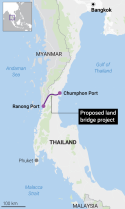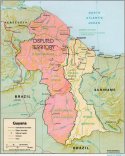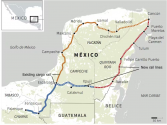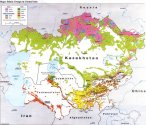. Why isn’t China buying?
- The Land Bridge project, a proposed route for shipping that could bypass the Malacca Strait, is being shopped by the Thai government as it seeks financing
- If built, the bridge could reshape the economy of Southeast Asia – but China has not shown a willingness to put up the cash
"It doesn’t look like an alternative route,” he said, adding offloading and reloading would be complex and may not cut costs to a significant degree.

The Thai government is hoping to roll out roadshows for promotional and fundraising purposes in the coming months, transport minister Suriya Juangroongruangkit was quoted as saying.
"China is already quite busy on the Kunming-Kuala Lumpur railway (completed to Vientiane),” he added, “so they may not want to take on another project".





